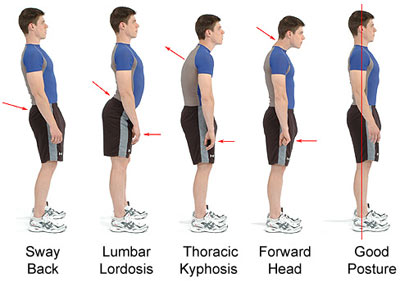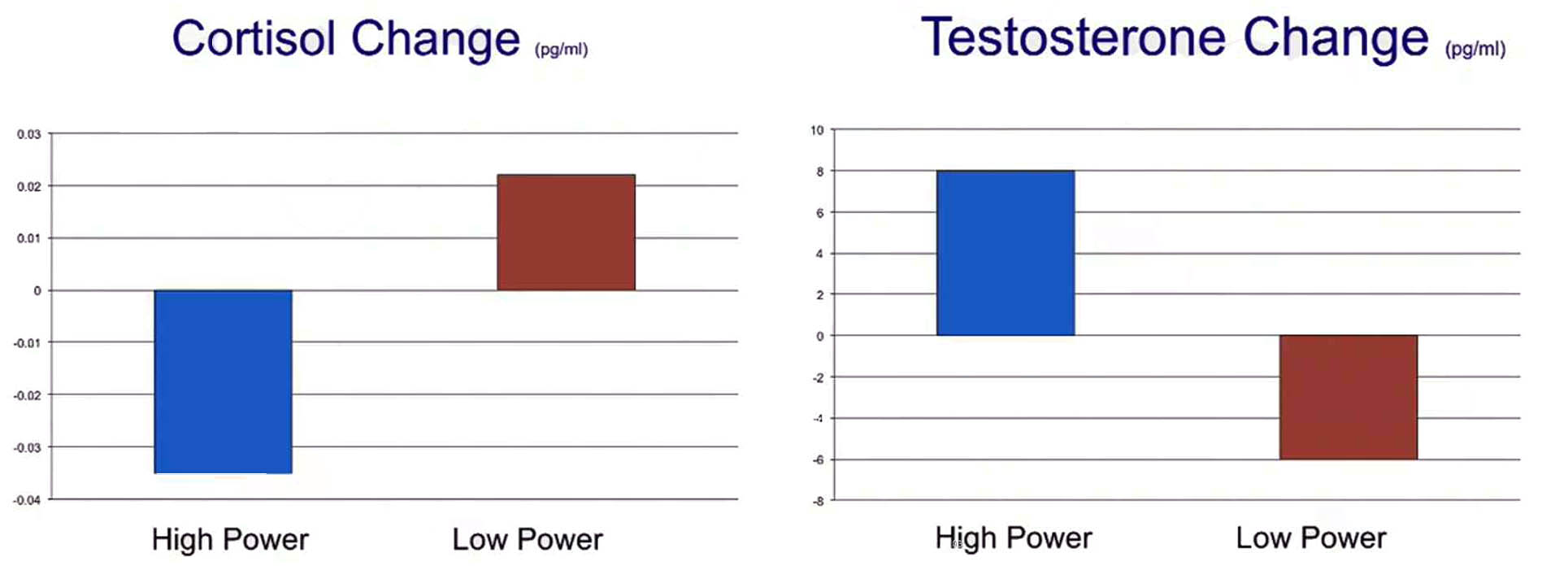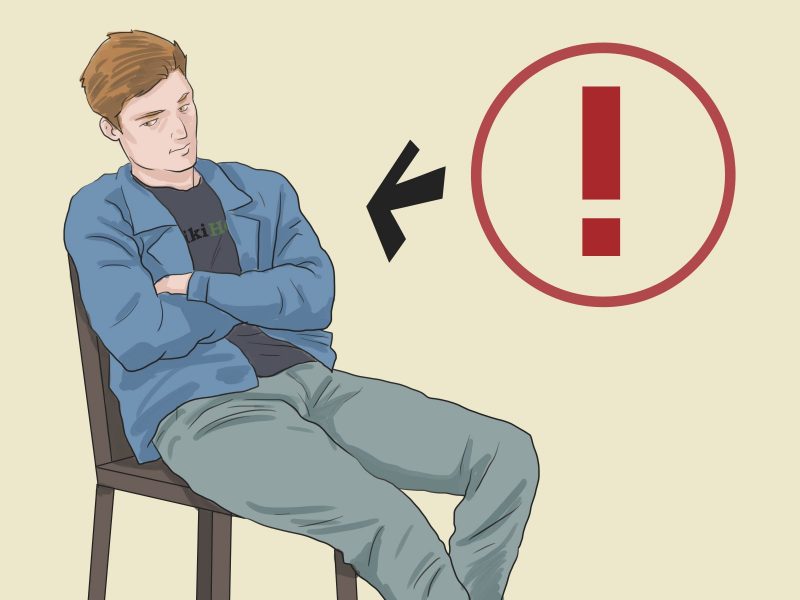If you, upon reading the title of this article and clicking, decided to re-adjust yourself from a hunched stupor, then you’re already aware that paying attention to your body language is something you know you should be doing, but often tend to forget about.
If you didn’t… well, this article will be an eye opener.
I believe one of the reasons why we can neglect favorable body language and good posture is that we simply don’t understand how closely the way we feel can be tied to our posture and how we carry ourselves.
Wait, so our emotions are tied to how we physically carry and present ourselves?
Absolutely.
What Does Poor Posture Look Like?
I’m going to start with a visual cue involving five different postures. Even though I will be focusing primarily on the psychological effects of poor posture and body language throughout the post, I believe it’s important to first understand why specific postures come about in the first place from a physiological perspective.
I want you to look at the following picture, approach a mirror and stand in a relaxed fashion. I want you to then look at yourself side on.
Now, being honest with yourself, which one of these would you say you identify with the most?

If you fit into the good posture group, congratulations, you can skip over this section. For everyone else, you haven’t yet earned that privilege. Keep reading.
Here are the reasons why each of these different postures come about:
Sway back. May look cool when you’re reclined back in the seat of your car, arm out the window and eyes peeking over the steering wheel. Not so cool when it’s your relaxed standing position. Also known as Posterior Pelvic Tilt, this posture is caused by:
- Tight hamstrings.
- Tight glutes.
- Tight lower abdominals.
- Weak quads.
- Weak lower back.
Lumbar Lordosis. Also known as Anterior Pelvic Tilt or Donald Duck syndrome, this one is very common among office workers spent sitting for long periods of time. I’m also guilty of this and have worked hard on improving it. Here’s why:
- Weak abdominals.
- Tight hip flexors.
- Weak glutes.
- Weak hamstrings.
Thoracic Kyphosis. Classic case of “hunchback” due to excessive upper back curvature of the spine. Shoulders are also very rounded. Symptoms include:
- Muscle weakness in the upper back (thoracic spine).
- Arthritis.
- Osteoporosis.
- Slipped discs.
- Scoliosis (spinal curvature).
Forward Head. Unlike Thoracic Kyphosis above, lifestyle factors largely dictate the cause of forward head posture. Some common causes include:
- Repeatedly looking down (at smartphones, laptops, typing, etc).
- Not using the headrest in your car (especially if reclined back plus leaning forward).
- Carrying a heavy backpack or handbag over one shoulder.
- Slouching while at the computer and leaning forward to compensate.
For every inch of forward head posture, it can increase the weight of the head on the spine by an additional 10 pounds. Kapandji, Physiology of Joints, Vol. 3
Over time, the more you neglect your posture, the further away from the expected “good posture” you drift. This is a given. And these are only the surface level physiological changes. Digging into the psychological aspects is where it all gets interesting.
Good Posture And Body Language
A TED talk (21 minutes) by Amy Cuddy titled your body language shapes who you are has amassed over 34M views since June 2012 on the topic of body language and posture. I highly recommend you watch this video if you haven’t seen it before.
The concept of high power (HP) poses versus low power (LP) poses was discussed at length, with some interesting results coming out of the study that was conducted.

Examples of two “high power” poses.
The experiment involved 61 Columbia University students, and showed that the test subjects who adopted a powerful, space-occupying pose for only two minutes fared better in terms of testosterone, cortisol (stress hormone) and risk taking confidence levels compared to their low powered counterparts.
- Two minutes of posing in a HP position produced a 20% increase in testosterone and a 25% decrease in cortisol.
- Two minutes of posing in a HP position also heightened the propensity for risk taking. 86% of HP participants were willing to gamble compared to only 60% of LP participants.
- Two minutes of posing in a LP position produced a 10% decrease in testosterone and a 15% increase in cortisol.
In other words, when we’re occupying space or opening ourselves up for some time, we’re more confident, more likely to take risks, and feel less stressed.
When we’re closed off, and occupying very little space, we’re more likely to be less decisive, be more stressed, and shy away from risk taking.
We all know that “successful” people take on and manage more risk than the average person.
Does this mean that “successful” people have a tendency to unknowingly put themselves into HP positions more often, thereby increasing their willingness to take gambles?
I believe a strong case can definitely be made for it.
Here’s a graphical representation of the results above:

After 2 minutes in either a “high” or “low” power pose.
What Your Body Language Says About You
I couldn’t write about this topic without mentioning a gentleman by the name of Joe Navarro.
A former FBI Agent and supervisor, Joe specializes in nonverbal communication and body language and has published several books on the topic. After reading What Every BODY Is Saying a year ago, my understanding of body language and nonverbal communication increased substantially.
In his article on Psychology Today, the importance of our “limbic system” is discussed, which is the part of our brain that controls our needs, feelings, thoughts, emotions and intentions. The actions produced by our limbic system happen at a subconscious level; meaning that we’re likely to be completely unaware of what we’re conveying to others.
An example of the limbic system in action involves using pacifying behaviors such as rubbing our necks when we’re stressed, or even clenching our jaws when we’re stressed or tense. We also unknowingly mirror the behavior of someone we love by tilting our head towards them, and shifting our bodies closer to signify our attraction and comfort.
Here are four examples of poor body language that I see everyday, which are all tied closely to what we’re feeling in our limbic system.
Slumped shoulders.
How would you feel if you saw a group soldiers all exhibiting rounded shoulders, looking down and not standing tall? I don’t think you’d be alone if you began to question their authority, doubt their level of competence and simply find it difficult to respect them. This is because “powerful” shoulders are known to communicate dominance, hierarchy and vigor.
Conversely, slumped shoulders show poor confidence and untruthfulness.
Years ago a well known forensic psychiatrist in the Washington, DC area gave me some valuable insight. He said, “Many of the patients I see are depressed and even before they open their mouths I can see it in their shoulders – slumped and weighty – you rarely see any movement.” And he was right of course. – Joe Navarro.
Avoiding eye contact.
This can be tough to get right, and I feel there’s a delicate balance between maintaining the right amount of eye contact in an interaction. Too much, and you risk making the other person feel uncomfortable, especially if abiding by conversational cues is not your strong suit. Too little, and you risk coming across as unsure, deceitful, and nervous. And that’s before you start talking about what level is acceptable in any given culture.
Nonetheless, holding an appropriate level of eye contact is key in business, which can aid your ability to persuade others and to confidently convey a message.
Crossed arms.
An example of an LP pose in the talk by Amy Cuddy. By crossing your arms, you’re creating a barrier between yourself and the person you’re speaking with. It also conveys defensiveness, impatience and a sense of hostility.

Crossed arms, an example of a “low power” pose (Wikihow)
Patti Wood, author of SNAP: Making the Most of First Impressions Body Language and Charisma mentions the following:
“You should always keep your hands in view when you are talking. When a listener can’t see your hands, they wonder what you are hiding. To look honest and credible, show your hands.
Barring a situation where you need to keep yourself warm, don’t cross your arms. It makes you look like an asshole.
Poor use of the hands.
Tonya Reiman, author of The Power of Body Language stresses the importance of what you’re doing with your hands.
It is rare to see the alpha of the group wildly flailing about. Powerful business people tend to use smaller, more subtle hand gestures to demonstrate their point with authority.
In addition, fidgeting with your hands, phone or hair can show nervousness or a lack of confidence.
Exercises To Improve Your Posture
“OK, I get it. My posture is horrid and I understand it needs to be fixed. How do I go about doing this?”
I’m glad you asked.
Here are a few resources for you to get started.
- How to Improve Posture for Optimal Performance: Thoracic extension and thoracic mobility.
- Improve your flexibility in 30 seconds: Thoracic bridge instructional video.
- Exercises to correct hunchback posture, hyphosis and forward head carriage: Self explanatory.
- Gymnastic style core stability exercise: The hollow body hold, one of my favorites for core work.
- Three simple foundation training exercises: Dr. Eric Goodman takes you posture-improving sequence that takes ~4 minutes.
Whether we like it or not, we’re judged by others on how we carry ourselves. This will not change anytime soon.
Is it fair? Probably not.
There’s no notion of fairness when it comes to our psychological programming.
However, I think it’s worth your while to stack the cards in your favor when it comes to posture, body language and nonverbal cues.
As Joe Navarro quoted in his book Louder Than Words:
The body reveals what the mind conceals.

